I used to think that I lacked focus and willpower, but now I know better. Here’s why. Scientists have discovered that the area of our brains called the pre-frontal cortex has a lot of responsibilities; but like any other structure in our body, it can do only so much. Sometimes, it just falls down on the job. Located right behind the forehead, it is in charge of keeping us focused, handling short-term memory, solving abstract problems, and managing our willpower. When overtaxed in performing these demanding tasks, it begins to fail. The collection of theories and observations about the pre-frontal cortex and its functions is known as the Principle of Capacity Limitation, referring specifically to the limits governing short-term memory and information processing.
Consider one experiment (conducted at Stanford University by Professor Baba Shiv) that illuminates this phenomenon. In the study, several dozen undergraduates were divided into two groups. One group was given a two-digit number to remember, while the second group was given a seven-digit figure. All participants were then told to walk down the hall, where they were presented with two snack options: a slice of chocolate cake and a bowl of fruit salad.
Here’s where it gets interesting.
The students who had been asked to remember the seven-digit number were nearly twice as likely to choose the cake as were those given the two digits to remember. The reason, according to Professor Shiv, is that those extra numbers took up valuable space in the brain. They formed a “cognitive load” that weakened willpower and the ability to focus — in short, made it harder to resist the chocolate cake.
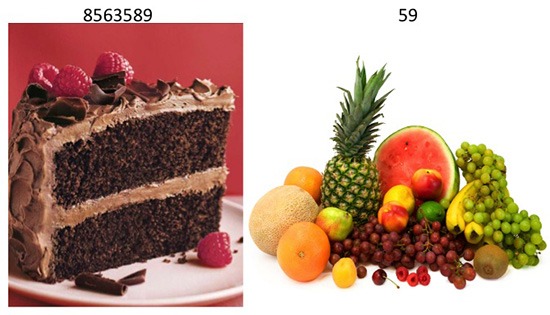
Man, can I relate. Understanding this part of my brain has helped me to understand my cognitive limits, and has empowered me to change my behavior and make better decisions. Because I am now more tuned in to the limits of human cognitive ability, I am very careful to consider those limits when I am designing healthcare reports and dashboards (and you should be, too). Because people have a finite capacity to retain and process information, they will not understand what you are trying to convey in your reports and displays if that information is too extensive or too complex to manage.
Consider the following chart I found on the Boston Public Health Commission’s website.
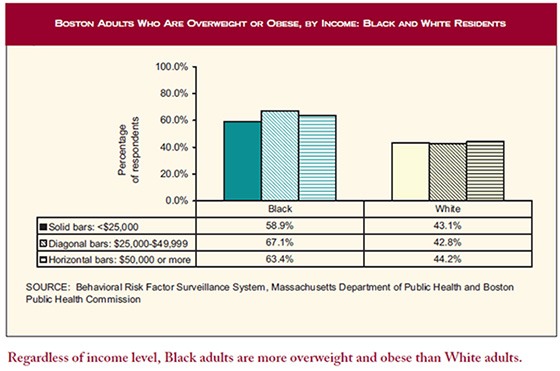
The arrangement of data in this graph obliges the viewer to consult the key on the lower left in order to interpret multiple bars, conveying multiple types of information, on the right. First, viewers must match an income level in the key to a bar with solid, diagonal, and|or tan or teal fill. Then, while holding that information in doubtless already overloaded minds, they need to match it with the percentages displayed — in rows beneath the bars.
If readers manage to do all of that, they must still make some quick calculations about what they are actually seeing. Finally — and probably in abashed and semi-unconscious recognition of the likelihood that the message isn’t getting through — there is a sentence in red ink that summarizes the information displayed.
Now consider the same information displayed this way (in a graph that I just created):
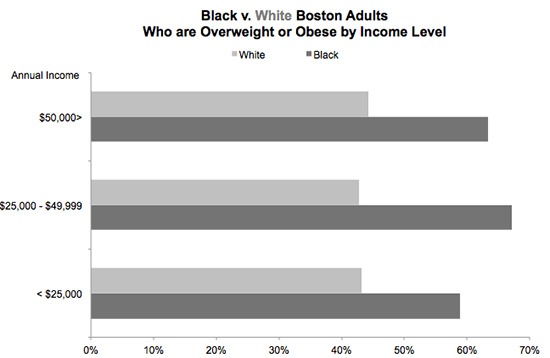
By simply turning the bars to the horizontal and comparing blacks and whites directly organized and ranked by income level, I have eliminated the challenge (presented by the previous chart) of holding multiple data points in mind while looking at different areas of a display, with the associated risk of overtaxing viewers and probably losing them. In my data display, the information is labeled and shown directly, the message is clear — and I didn’t have to add a bright — red sentence as a sort of “cheat-sheet” to interpret the muddle.
Here is the bottom line. As much as we hate to admit it (well, at least I do), we are human, and we have limits: limits on the amount of information we can keep in our heads at any one time; limits on how much and how fast we can process that information. Armed with this awareness, we must continually endeavor to create data displays that provide the right balance of volume and complexity of information — presented in a way that doesn’t send our viewers in search of chocolate cake.
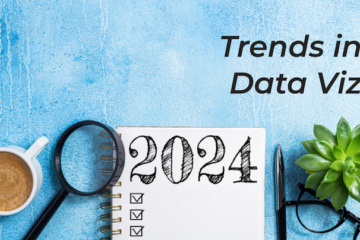

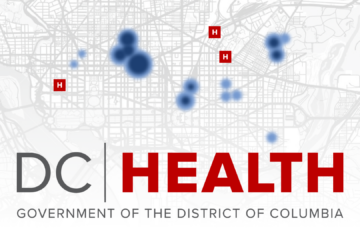
0 Comments